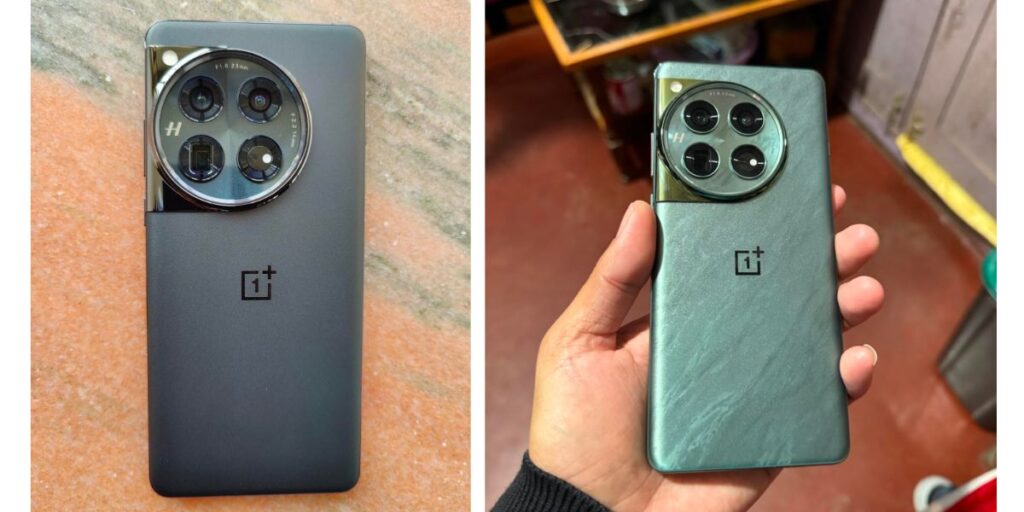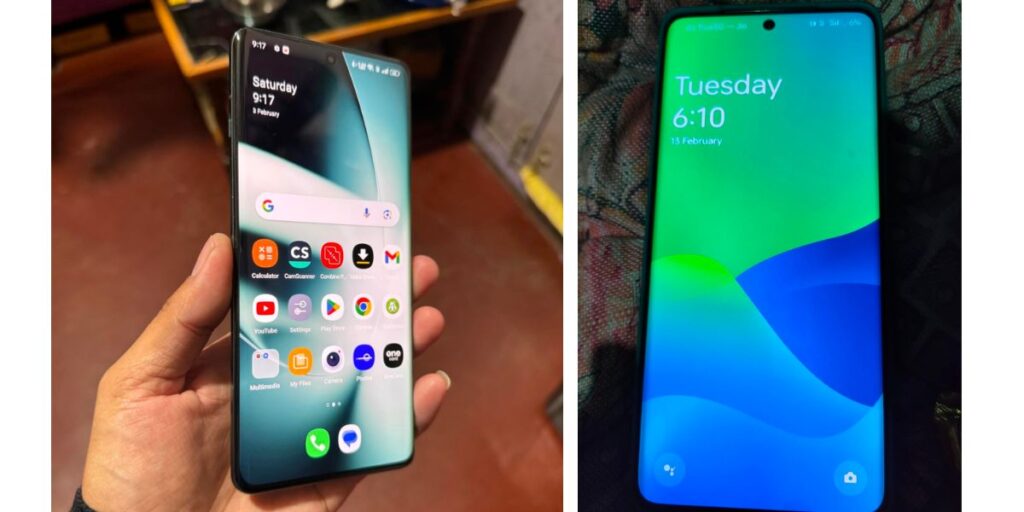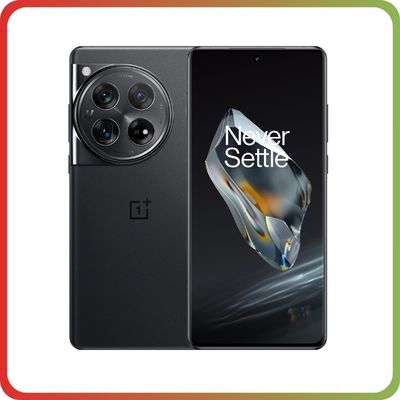OnePlus 12 Review
OnePlus 12 Review – OnePlus made waves last year with its flagship-killer OnePlus 11, and now, they’re back with the OnePlus 12, focusing on refining their already impressive formula. While the external changes might not immediately catch your eye, the OnePlus 12 boasts significant upgrades under the hood. These include a new Snapdragon 8 Gen 3 chipset, a beefier battery, and the long-awaited inclusion of wireless charging support. Additionally, OnePlus continues its partnership with Hasselblad for camera enhancements, marking the fourth year of collaboration. Notably, the primary camera now features the advanced LYT-808 Image Sensor.
However, these enhancements come with their own set of trade-offs, both in terms of physical dimensions and price. The introduction of a larger 5,400mAh battery and wireless charging capabilities has led to a slight increase in thickness, from 8.53mm to 9.15mm. Moreover, the starting price has seen a bump from Rs 56,999 to Rs 64,999. While these changes might not sit well with die-hard OnePlus fans accustomed to slimmer profiles and competitive pricing, the question remains: do these compromises truly matter? Let’s delve deeper to find out.
Table of Contents
OnePlus 12 Review – Design and Display
In terms of design, the OnePlus 12 maintains the familiar aesthetics of its predecessor, the OnePlus 11, albeit with a noticeable increase in thickness. However, there are subtle ergonomic improvements, such as the repositioning of volume buttons and the alert slider for enhanced usability. Personally, I found the new button arrangement to be more intuitive, with the volume buttons conveniently positioned above the power button.
Color options remain consistent with previous iterations, offering the choice between Black and Green variants. Opting for the green variant, I found its aesthetic appeal to be quite pleasing. Notably, the camera module now adopts the same color scheme as the smartphone itself, adding a touch of uniformity to the design. The inclusion of shiny accents on the rounded camera module further elevates the visual allure, particularly under ambient lighting conditions. The device retains a robust metal frame along the edges, ensuring durability. Additionally, OnePlus includes a protective case in the package, perfectly complementing the smartphone’s overall design language.

However, it’s hard to ignore the tangible increase in thickness and weight of the OnePlus 12. While the additional heft might not be immediately bothersome, extended usage, particularly during gaming or multimedia consumption, could prove tiresome. Nevertheless, this trend of increasing dimensions is not unique to OnePlus, as most flagship devices grapple with similar compromises to accommodate additional hardware features.
The display sees notable enhancements, including the repositioning of the selfie camera cutout to the top center, a departure from its previous placement in the top left corner. Sporting a taller 6.8-inch AMOLED panel with a 2K resolution (3,168 x 1,440 pixels) and peak brightness of up to 4,500 nits, the OnePlus 12 offers a visually immersive experience. Leveraging advanced LTPO technology, the display boasts a dynamic refresh rate ranging from 1Hz to 120Hz, optimizing power efficiency. Furthermore, the incorporation of ProXDR technology ensures precise brightness adjustments, enhancing viewing comfort across various lighting conditions.

From my usage experience, the OnePlus 12’s display delivers a delightful viewing experience, characterized by vibrant colors and sharp details. The curved display mitigates accidental touch issues, a common concern with previous iterations featuring similar screen designs. However, gaming on curved displays presents its challenges, which I’ll explore further later. For tasks like movie streaming or reading, the elongated screen of the OnePlus 12 offers a visually captivating experience. The inclusion of stereo speakers with 3D Spatial Audio further elevates the overall multimedia immersion.
Moreover, the display is fortified with Corning Gorilla Victus 2 for enhanced durability, while the Aqua Touch feature enables seamless operation even with wet fingertips. With an IP65 rating for dust and water resistance, the OnePlus 12 ensures reliable performance in various environments, although it falls short of the IP68 standard adopted by some competitors.
OnePlus 12 Review – Cameras
OnePlus has significantly upgraded the camera system on the OnePlus 12, equipping it with a versatile array of lenses to cater to diverse photography needs. The rear camera setup now comprises a high-resolution 50MP primary camera featuring the state-of-the-art Sony LYT-808 image sensor (1/1.4-inch), accompanied by a 64MP periscope-style telephoto camera capable of 3X optical zoom and up to 100x digital zoom. Additionally, there’s a 48MP ultra-wide camera to capture expansive landscapes with remarkable detail. On the front, a 32MP selfie camera ensures crisp and clear self-portraits, capable of recording videos in 4K resolution at 30fps.
In terms of imaging capabilities, the OnePlus 12 prioritizes natural color reproduction, albeit with a tendency towards cooler tones in most instances. Both the primary and telephoto cameras excel in well-lit conditions, delivering striking images with impressive sharpness and detail. Even under challenging lighting scenarios, such as harsh sunlight, the OnePlus 12 effectively manages over-exposed areas to maintain overall image balance.

Improved skin tone detection, particularly with the primary camera, contributes to more flattering portraits, although some users might find the tendency to brighten complexions slightly excessive. Portrait shots captured with the telephoto camera exhibit lush bokeh effects, albeit with occasional inconsistencies in skin tone rendition.
In low-light conditions, the OnePlus 12’s primary and telephoto cameras offer commendable performance, albeit with a preference for high-contrast outcomes, resulting in pronounced shadows for added dramatic effect. While the resulting images exhibit satisfactory visual quality, the dynamic range might occasionally suffer, compromising shadow detail. Moreover, occasional lens flare issues persist, albeit to a lesser extent compared to previous iterations. From my perspective, the Google Pixel 8 Pro stands out in mitigating such issues through software optimizations.
The ultra-wide camera, while adept at reproducing natural colors, tends to soften images, particularly in low-light environments, where it struggles to retain fine details, resulting in a somewhat subdued outcome.
Selfie enthusiasts will appreciate the pleasing results delivered by the OnePlus 12’s front-facing camera, particularly in well-lit conditions. Without the portrait mode enabled, selfies exhibit a natural appearance, with accurate skin tone reproduction. However, activating the portrait mode can sometimes lead to over-brightened or dull complexion rendering, warranting further refinement in software processing algorithms.
On the video front, notable improvements in stability enhance the overall quality of footage, making it particularly appealing for aspiring content creators. The rear camera’s ability to capture 8K videos at 24fps aligns with industry standards for high-end smartphones, although ultra-stabilization is limited to 1080p60fps videos. Despite maintaining balanced colors, video clips may occasionally exhibit graininess, albeit remaining suitable for platforms like YouTube.
However, for professional content creators prioritizing cinematic capabilities, alternatives like the iPhone 15 Pro or iPhone 15 Pro Max offer superior bokeh effects through their cinematic mode.
OnePlus 12 Review – Performance and Software
The OnePlus 12 offers two storage variants, with the base model featuring 12GB of LPDDR5X RAM and 256GB of UFS 4.0 storage. The variant under review boasts 16GB of LPDDR5X RAM paired with 512GB of UFS 4.0 storage, priced at Rs 69,999. Powering the OnePlus 12 is Qualcomm’s Snapdragon 8 Gen 3 SoC, ensuring swift and responsive performance across various tasks.
Benchmark tests demonstrate commendable performance metrics, outperforming competitors like the Pixel 8 Pro equipped with the Tensor G3 SoC. However, rivals like the iQOO 12 showcase superior stability in prolonged usage scenarios, as evidenced by Throttle Test results.
In real-world usage scenarios, distinguishing between the OnePlus 12 and its counterparts in terms of speed can be challenging. Everyday tasks like social media browsing, video streaming, and photography exhibit comparable performance across devices. Notably, the OnePlus 12 offers exceptional read and write speeds, courtesy of the USB 3.2 standard implemented on the USB-C port. Furthermore, the device demonstrates commendable stability, with no instances of abrupt app crashes during my review period.
However, for avid gamers seeking an immersive gaming experience, the OnePlus 12 might not emerge as the ideal choice due to occasional mis-touches facilitated by the curved screen. While the device capably handles demanding titles like BGMI, Call of Duty, and Genshin Impact with consistent frame rates, competitors like the iQOO 12 (Review) offer smoother performance under similar settings.
Nevertheless, for users prioritizing productivity-centric functionalities, the OnePlus 12 stands out as the first OnePlus device to ship with Android 14-based OxygenOS 14. The promise of four years of Android updates underscores OnePlus’ commitment to software longevity, albeit falling short of the seven-year update pledge adopted by competitors like the Google Pixel 8 and Samsung Galaxy S24 series.
The clean Android experience offered by the OnePlus 12, coupled with the inclusion of an infrared blaster for seamless control of household appliances like TVs and air conditioners, enhances its appeal among productivity-focused users.
Moreover, the device’s 5G support ensures future-proof connectivity, with impressive network speeds of up to 250Mbps achievable with an Airtel 5G Plus SIM, albeit subject to coverage limitations.
OnePlus 12 Review – Battery and Charging
To accommodate the myriad features packed into the OnePlus 12, the device now houses a larger 5,400mAh battery. Impressively, the OnePlus 12 delivers exceptional battery life, capable of enduring prolonged usage scenarios with ease. Even under heavy load conditions, including performance mode enabled, maximum screen resolution and refresh rate, and extensive gaming sessions, the device comfortably lasts for 12 hours on a single charge. Modulating these settings further extends battery life, ensuring sustained usage throughout the day.
Moreover, the OnePlus 12 boasts 100W wired charging support, facilitated by the inclusion of a 100W charger in the package. Charging from zero to full capacity takes approximately 35 minutes, offering unparalleled convenience for users on the go. Additionally, the device supports 50W AirVOOC wireless charging, further augmenting its versatility in charging options.
Verdict
fter testing the OnePlus 12, it’s clear that OnePlus has crafted a solid flagship phone. While it’s thicker and pricier compared to its predecessor, it brings significant improvements in performance, display quality, and camera capabilities.
The phone’s larger battery ensures long-lasting usage, and its fast charging options make topping up a breeze. The display is vibrant and immersive, perfect for watching videos or playing games. Plus, the upgraded cameras capture sharp and natural-looking photos in most lighting conditions.
Overall, while the OnePlus 12 may not be the slimmest or cheapest option out there, it offers a great balance of features and performance, making it a strong contender in the competitive smartphone market
Pros -
Cons -
Share on :

Price
Connect with us on:








